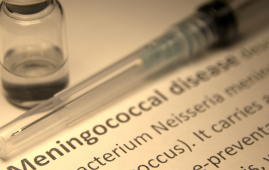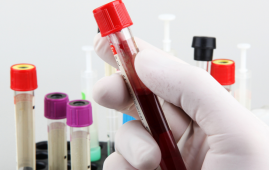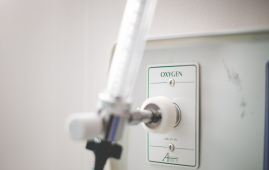

Researchers designed and tested a new dry powder aerosol COVID-19 vaccination in a recent study published in the journal Nature. The nanoparticle-based vaccine combines SARS-CoV-2 RBD antigens with cholera toxin B subunits. In murine and non-human primate models, this single-use nasal spray increases the strong generation of IgG and IgA antibodies as well as local T cell responses with the nasal canal and alveoli. The virus’s makeup enables it to provide resistance against both ancestral COVID-19 variants and more contemporary Omicron strains. This innovative vaccination could serve as the foundation for a new generation of non-invasive COVID-19 and other respiratory tract diseases vaccines.
COVID-19 and the Benefits of Immunization
Coronavirus disease 2019 (COVID-19) was caused by the ongoing severe acute respiratory syndrome coronavirus 2 (SARS-CoV-2). It was one of the most destructive pandemics in recent history. Since its breakout in late 2019, it has caused significant morbidity, death, and socioeconomic loss, killing about 7 million lives and leaving more than 65 million survivors with long-term symptoms (Long COVID).
Fortunately, the fast development of vaccinations against the virus has slowed or even stopped its spread in many areas. The majority of commercially available anti-COVID-19 vaccines are inactivated virus, messenger RNA (mRNA), protein subunit, and viral-vectored vaccines. Unfortunately, all of these vaccines have one thing in common: they are all provided via intramuscular injections with the goal of creating serological immunoglobulin G (IgG). These vaccines, while efficacious, do not give protection in the respiratory tract.
A increasing body of evidence suggests that the respiratory system not only serves as the primary site of COVID-19 infection, but also has the highest viral load throughout the disease and (in the case of Long COVID) beyond. This issue has motivated the creation of new vaccination classes intended for intranasal or nebulized administration. Notably, studies on these vaccinations have shown that much lower doses are necessary to obtain the same level of protection as conventional intramuscularly injected anti-virals.
However, most developed and experimental intranasal vaccines have been stored, transported, and administered as liquids or wet aerosols, resulting in considerable economic cold-chain costs and the need for several doses to achieve the necessary efficacy. Furthermore, the majority of currently available vaccinations are monovalent, targeting one of a restricted set of SARS-CoV-2 mutations. SARS-CoV-2 is a fast evolving virus that has resulted in the discovery of hundreds of strains. Because of this discrepancy, innovative vaccines capable of targeting various COVID-19 strains while requiring minimum patient follow-up are required.
Concerning the research
Researchers created and tested a new intranasal vaccination that is polyvalent (targets multiple COVID-19 lineages) and retains its potency after lyophilization (freeze-drying). The vaccine was designed to comprise particles 1-4 m in size to optimize deposition in the alveoli (deep lung) and ensure that efficacy loss was not caused by exhaling particles too small or resulting in particles too large depositing in the superficial lung.
The nano chassis for the vaccine was the cholera toxin B (CTB) subunit produced in a genetically engineered Escherichia coli BL21 strain. The molecular weight of the chassis was determined using sodium dodecyl-sulfate polyacrylamide gel electrophoresis (SDS-PAGE) and immunoblotting, and its size was confirmed using transmission electron microscopy (TEM). DLS analysis revealed that the particle size of the chassis was primarily uniform within the specified size class. Surface plasmon resonance and enzyme-linked immunosorbent assays (ELISAs) were used to assess R-CNP antigenicity.
Previous research has shown that direct inhalation of nanosized particles leads in poor alveolar absorption. To solve this issue, researchers enclosed the CTB chassis in microcapsules ranging in size from 1-4 m.
“By fine-tuning the membrane pore size, osmotic gradient, and pore evolution time, the microspheres can be controlled for particle size, porosity, and cavity volume, which facilitated optimization of R-CNP@M to a suitable aerodynamic size and high encapsulation efficiency”
The size and absorption of R-CNP@M (R-CNP encapsulated in microcapsules) were confirmed using confocal laser scanning microscopy (CL-SEM) in conjunction with 3D reconstructions. Following lyophilization, R-CNP@M was found to be stable for aerosol delivery, resulting in a uniform fog when supplied using a dry powder aerosol generator (DPAG). This aerosol was demonstrated to consistently deliver the vaccine for up to five weeks after injection with no noticeable effectiveness decline.
The formulation was tested on mice, hamsters, and nonhuman primates. All test subjects had positive results, with persistent vaccine delivery to the alveoli detected for up to 42 days.
“The area-under-the-curve values of R-CNP@M were improved by 3.5-fold compared with those of R-CNP, suggesting that R-CNP@M can induce continuous antigen stimulation in the lungs”
On the 21st day after immunization, immunological responses in CD45+ cells were measured using single-cell TNA sequencing (scRNA-seq). In terms of stimulating antigen-presenting cells, R-CNP@M beat currently existing intramuscular and liquid aerosol vaccinations. Similarly, the fraction of activated CD8+ memory T cells was highest when R-CNP@M was used. Antibody titers of RBD-specific IgM, IgG, IgG1 and IgG2a in serum were more rapidly and robustly increased by a single dose of R-CNP@M than by two doses of free R-CNP (10 g equivalent RBD), whereas RBD-specific antibodies were undetectable in the CNP group, according to ELISA measurements of collected mice, hamster, and non-human primate blood.
Conclusions
The current study describes the invention of the first dry-aerosol vaccination vehicle, which overcomes the shortcomings of traditional intramuscular vaccine delivery systems and outperforms liquid-based aerosols in both economic and efficacy measures. The nanoparticle chassis contained in a 1-4 m microcapsule was proven to be stable and safe in mammalian and non-human primate test subjects for up to 42 days. For up to five weeks after delivery, the vaccination demonstrated constant antigen release into the alveoli. It produced the highest levels of immunoglobulin and memory T cell activation of any immunization regimen studied.
“The inhalable vaccination addresses a known public health issue, in that there is more enthusiasm for this type of administration than for traditional injection, and a single-dose regimen is favorable for substantially increasing the proportion of total completed vaccination recipients. Furthermore, the dry powder form of the vaccine can provide savings in storage and transportation costs, potentially supporting increased immunization coverage in remote areas. Additionally, the prospects of clinical translation are boosted by its use of a proteinaceous nanoparticle chassis and a microcapsule based on a US Food and Drug Administration-approved material.”
Most encouragingly, this vaccine was discovered to be both single dose and multivalent – unlike traditional vaccines, R-CNP@M’s effectiveness against infection by conventional and Omicron COVID-19 lineages remained consistent. Furthermore, unlike previous vaccines (including most aerosol-based ones), this vaccine only needs to be administered once.
Read more: Inhaled SARS-CoV-2 vaccine for single-dose dry powder aerosol immunization, Nature Journal, https://doi.org/10.1038/s41586-023-06809-8
more recommended stories
 Osteoarthritis Genetics Study Uncovers New Treatment Hope
Osteoarthritis Genetics Study Uncovers New Treatment HopeOsteoarthritis- the world’s leading cause of.
 Antibody Breakthrough in Whooping Cough Vaccine
Antibody Breakthrough in Whooping Cough VaccineWhooping cough vaccine development is entering.
 Scientists Unveil Next-Gen Eye-Tracking with Unmatched Precision
Scientists Unveil Next-Gen Eye-Tracking with Unmatched PrecisionEye-tracking technology has long been a.
 Men5CV: Hope for Ending Africa’s Meningitis Epidemics
Men5CV: Hope for Ending Africa’s Meningitis EpidemicsA landmark global health study led.
 Stem Cell Therapy Shows 92% Success in Corneal Repair
Stem Cell Therapy Shows 92% Success in Corneal RepairA groundbreaking stem cell therapy known.
 Gene Therapy for Maple Syrup Urine Disease
Gene Therapy for Maple Syrup Urine DiseaseResearchers at UMass Chan Medical School.
 How Fast Are Your Organs Aging? Simple Blood Test May Tell
How Fast Are Your Organs Aging? Simple Blood Test May TellNew research from University College London.
 HEALEY Platform Accelerates ALS Therapy Research
HEALEY Platform Accelerates ALS Therapy ResearchA New Era of ALS Clinical.
 Low-Oxygen Therapy in a HypoxyStat Pill? Scientists Say It’s Possible
Low-Oxygen Therapy in a HypoxyStat Pill? Scientists Say It’s PossibleA New Approach to Oxygen Regulation-HypoxyStat.
 Early Alzheimer’s Diagnosis with Advanced Tau Test
Early Alzheimer’s Diagnosis with Advanced Tau TestA New Biomarker Test Promises Early.

Leave a Comment